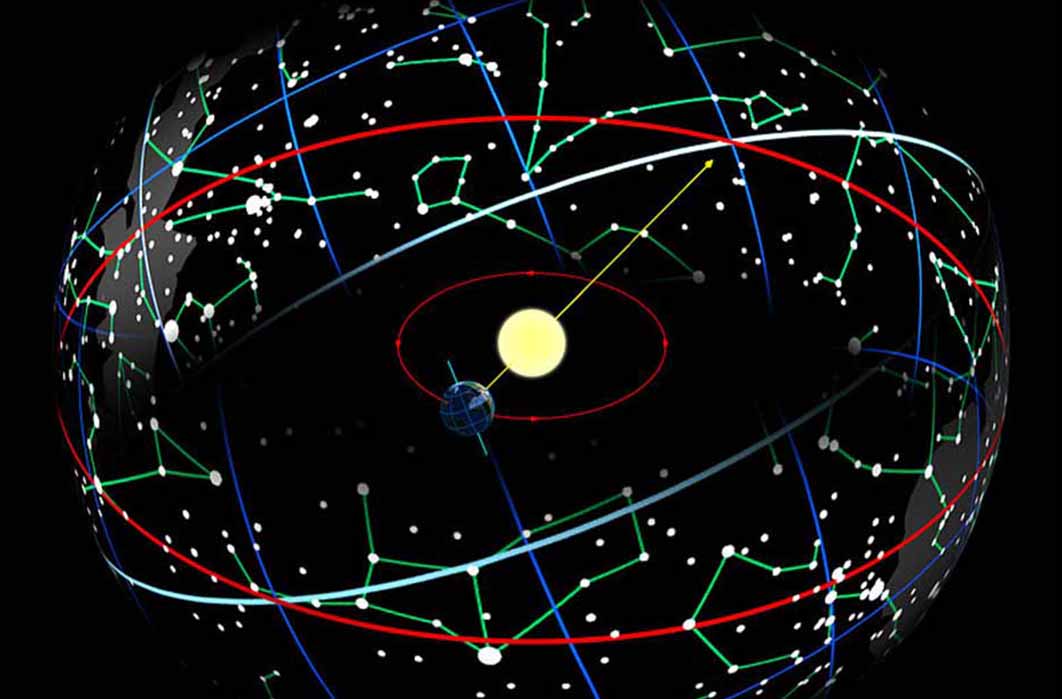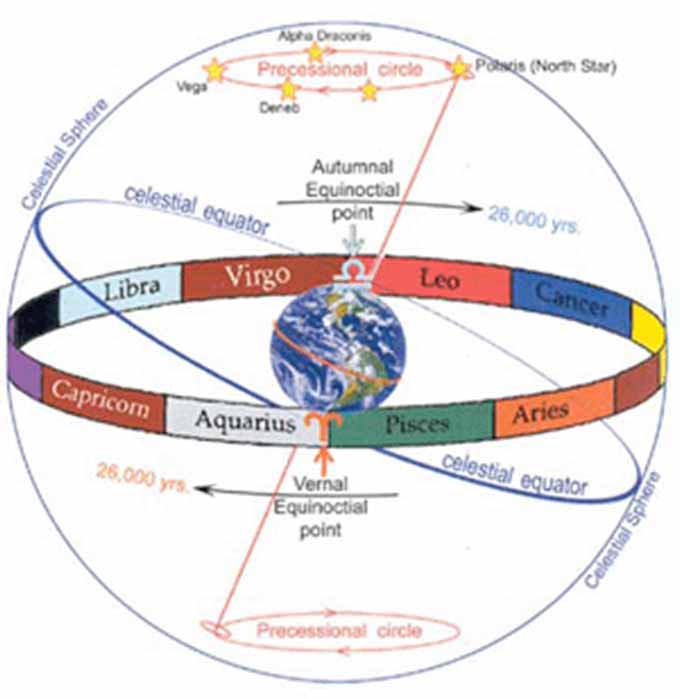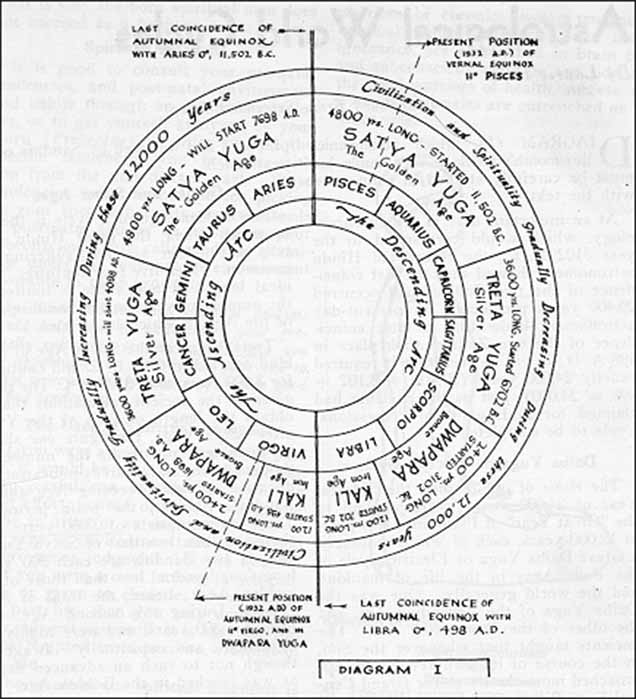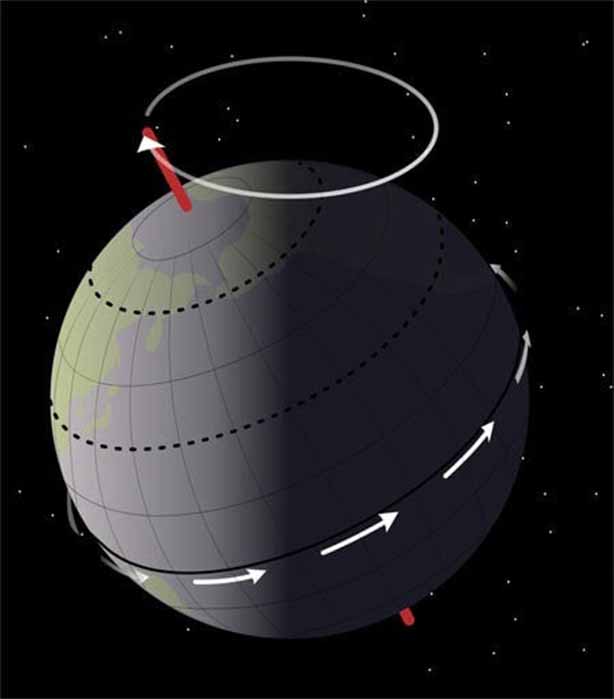
The Dynamic Dance Of The Earth, Solar System, And Precession
Long before the dark ages, history recalls the myth and folklore of a higher age. Hesiod, the famed Greek historian (circa 700 BC), tells it was a time of peace and plenty when mankind lived in tune with earth, and “she gave of herself freely”. He lamented that Greece of his time experienced a period of decline, suggesting a cycle of ages with ascending and descending phases that moved like the seasons, albeit on a much longer scale. The Greeks called their lowest age the Iron Age, or Age of Man, next was the Bronze Age, known as the Age of the Hero, then came the Silver Age, Age of the Demigods, and finally the Golden Age, or Age of the Gods. Plato (circa 400 BC) referred to this cycle as the “Great Year”, a period of time equal to one Precession of the Equinox, about 25,000 years.

The precession of the equinox around the constellation of Draco takes nearly 26,000 years to complete. This period is known as a Great Year. This precessional 'wobble' moves the 'vernal point' through each constellation of the zodiac, one by one. (Image: Courtesy Ralph Ellis)
The Vedic Indians held the same belief and called it the Yuga Cycle, also breaking it into ascending and descending halves with four ages each. They called their lowest the Kali Yuga. Next was their Dwapara Yuga or Age of Energy, then the Treta Yuga, the Age of Mental Powers and Telepathy. Their Golden Age, Satya Yuga, was said to be a time of unimaginable virtue and beauty. Manu, the great legislator dating to prehistory, said the cycle was about 24,000 years, a time very close to Plato’s estimate.

Yuga Cycle with Equinoctial Points - Sri Yukteswar (Image: Provided by the author)
Modern scholars recognize that many great ancient civilizations declined into a dark age near the low point in the chart above. Yet, there are no obvious phenomena that would cause a pattern of cycles. Historians today believe that pre-dark age cultures were the victims of their own poor decisions, disease and economic setbacks, unrelated to any cycle.
Natural Cycles of Celestial Motion
There are natural cycles that affect consciousness and behavior on a mass scale, but they are so obvious one hardly thinks about them. The first is the earth’s rotation. As the earth’s axis rotates it brings alternating periods of light and darkness, more or less depending on the latitude and season. Most creatures have adapted their waking and sleeping patterns to this “diurnal motion”. Animals and people become conscious and active in the world with the expanding light, only to drift back into a subconscious “sleep state” with the darkness of night. In other words, the light from earth’s nearest star literally flips consciousness on and off every 24 hours, but it is so common no-one thinks it unusual. Billions of plants and animals go through a daily metamorphosis tied to this first celestial motion.
The earth’s second motion is its orbit around the sun. Copernicus called this “revolution” and indeed it has revolutionary effects. As the earth, on a slight axial tilt, revolves around the sun it changes the behaviors of trillions of plants even more profoundly than the earth’s first motion. The waxing light of spring causes countless species to sprout from the ground, bloom and bear fruit in endless colors and varieties, and then with the waning light of autumn, fall, decay, or die, in the winter. And it is not just plants. Billions of animals awaken from hibernation or otherwise become active with the expanding light of spring, while trillions of others will spawn, procreate, or migrate in patterns all over the globe. Like a Disney movie, the maestro of light conducts its orchestra of lifeforms, causing them to dance and sing in infinite variety! Technically, it is the electromagnetic waves of earth’s closest star, the sun, that causes all the change. Whether it is visible light, ultra-violet, infrared, x-rays or gamma rays, the spectrum of light emanating from the sun has inconceivable power!





